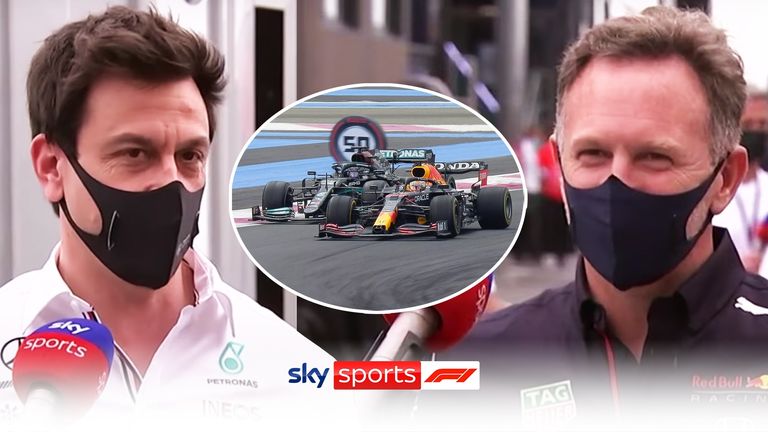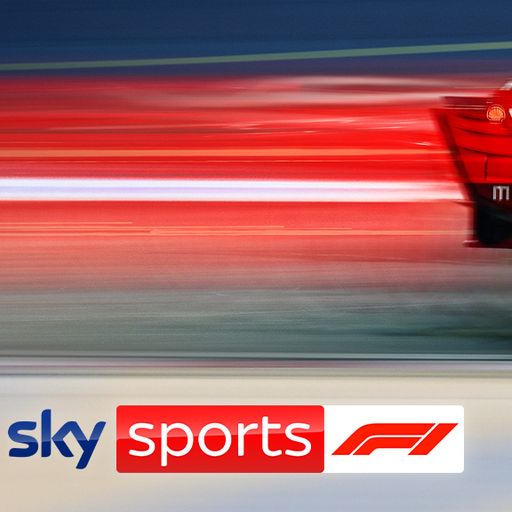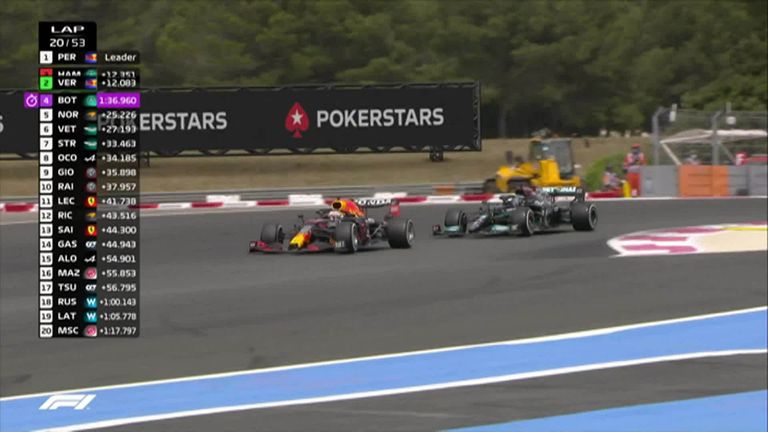Martin Brundle: Max Verstappen vs Lewis Hamilton worth the wait as Red Bull wrongfoot rivals in France
In his French GP column, Martin Brundle reflects on another gripping battle between Max Verstappen and Lewis Hamilton as the Formula 1 2021 title race hots up, and delivers his verdict on the big strategy calls that helped Red Bull beat Mercedes again
Wednesday 23 June 2021 13:21, UK
This is going to be a season of F1 racing that just keeps on giving. As we march through the practice sessions, qualifying phases, and races it seems to constantly boil down to Max Verstappen versus Lewis Hamilton, and therefore Red Bull versus Mercedes-Benz.
We've been waiting for this through seven hybrid F1 seasons and it appears to be well worth the wait. This is about speed, consistency, guile, racecraft, calculated risks, and delivering all day every day. I'm really happy to be witnessing it.
- Driver Ratings: Assessing the performances from French GP
- Mercedes left with 'lots to learn' after Red Bull's 'payback'
- Nico Rosberg and Sky F1 pundits on Verstappen vs Hamilton
It always feels special to revisit Paul Ricard, bringing back memories for me of the 1980s when this event had a sports festival and summer holiday feel to it, in the sunshine high up in the hills of the Cote D'Azur.
The track was always fast and old school with scarily short run offs filled with sun-baked gravel and the dreaded wire mesh and wooden poles called 'catch fencing' which could often do more harm than good.
It's a very similar layout today, a third of a century later, but the now very large run off zones are filled with a kaleidoscope of red and blue stripes which can trick your eyes. This coloured paint is supposedly very grippy to slow the cars down when spinning, although when it's inevitably dusty they just seem to rip holes in the tyres before depositing the car in the barriers anyway.
The place was always a tyre killer whichever category of racing and tyre manufacturer and, after the blowouts in Baku for Verstappen and Lance Stroll, the FIA delivered a comprehensive 'Technical Directive' which set out a significant set of new checks for tyre pressure management and blanket heating.
Without ever quite saying so, the inference was that Red Bull and Aston Martin had been running their tyre pressures below the recommended minima while out on track and so contributed to the tyre failures, which those teams strongly denied. It's a very serious topic if driver and track worker safety is being put at risk for performance.
Pirelli want the security of higher inflation pressures which add strength and support to their tyres - after all any tyre manufacturer who is the sole supplier to a championship simply doesn't need the extremely bad publicity of tyre failures. They are guaranteed to win anyway.
The weight, aero downforce, and 1000 horsepower motors put a tremendous strain on F1 tyres and their four contact patches which transmit everything into the track. It's a cat and mouse game between the performance engineers and the tyre suppliers for grip versus structural integrity, as it has been for decades.
Ironically both Red Bull and Aston Martin had comparatively strong races, unlike Ferrari, which suggests that the story was over played, rather like the flexy rear wing controversy. It's not a great surprise because the teams are always looking for a myriad of small improvements, and so the knockbacks are also going to be similarly small.
There was another stormy teacup story in the curious case of Mercedes 'rotating' their chassis between drivers, which sounds more like a flip flop than a rotation. When it all shook out, the focus remained on a fight for pole position between Hamilton and Verstappen, which Max won with a tremendous lap, and not his first of the weekend.
The rear gunners of Valtteri Bottas and Sergio Perez were exactly that in the qualifying reckoning.
A rain shower on race morning gave the track a good wash which would take away some diligently laid down rubber from the practice sessions and so reduce grip. On the run down to the first corner Max never felt comfortable enough to drive hard right and claim the full racing line into the left hander, which left him turning in quite hard along with a tail wind for good measure. The rear end slid and Hamilton claimed a strong lead.
At first it appeared that Mercedes had the upper hand and Bottas looked particularly quick as the trio pulled away from Perez and the rest of the field. But Mercedes were using their tyres harder and Bottas apparently had a vibration from a lock up and so they pitted him first of the leaders on lap 17. Red Bull covered that immediately on lap 18 to keep Verstappen ahead of him, and then Mercedes pitted Hamilton from the lead on lap 19.
For all the world it looked as if Mercedes thought they'd undercut Verstappen with Bottas and then keep Lewis in the lead. They say not, but they lost out big time.
A total pit stop time cost consists of the 'in-lap' pace including any traffic, attacking the pit lane speed limit line, approaching your own pit box at sensible but urgent speed without scattering your crew, and stopping accurately on your marks.
This is followed by the tyre change itself, and then how quickly you can drop the clutch and get into the fast lane of the pits and hard back into the limiter (40mph in Ricard), and then releasing the limiter right on the pit exit line and getting up to speed throughout the 'out lap' , once again including any traffic.
Pitting earlier for fresh tyres to pass your rival is called the undercut and it was very powerful on the day. Mercedes were wrong footed and their data suggested Lewis was safe, and even in the post race interview Lewis was saying he didn't understand how he'd lost the lead.
The top three drivers all made it clear on the radio that at the punishing pace they were pushing along they would not make it to lap 53. Red Bull returned the compliment from Barcelona earlier this year by giving up track position and committing to a two stopper by pitting Max on lap 32. It was too late for Mercedes to respond and so the only two levers they had left to pull was for Bottas to hold Verstappen up as he steamed through on fresh medium tyres, and for Hamilton to magic up some pace on old tyres just as he has done many times before.
Neither lever was enough to stop a brilliant Verstappen victory in an enthralling race.
I don't agree that Hamilton was too soft when letting Verstappen by. He was out of tyres and the pass was inevitable before the finish given the Red Bull's straight-line speed and DRS assistance. In the same way that Verstappen wasn't super aggressive when Hamilton passed him in Budapest and Barcelona before in similar circumstances.
It's a bit like knocking your King over in a chess match, your loss is inevitable and you may as well bag the 18 points for second and lick your wounds ready for another day, rather than terminally flat spot a tyre or lose your front wing.
Bottas was rightly livid that his team hadn't listened to him about two stopping and, to add insult to injury, Perez passed him for third place, making his own one stop on lap 24 work impressively well. And because Perez was under investigation for running wide in Signes corner, Mercedes didn't feel it sensible to go for fastest lap with Bottas thereby giving Max the hat trick of pole, victory and fastest lap, his first in Formula 1.
For the 10th time in F1 history, all starters finished the race, and honourable mentions must go to McLaren for Norris and Ricciardo in fifth and sixth; Aston Martin in ninth and 10th, with the latter being Lance Stroll from 19th on the grid. Fernando Alonso for his fourth points finish in six races, and Pierre Gasly for doing a very solid job again for AlphaTauri. And George Russell, who I barely remember seeing race long, finishing a strong 12th for Williams.
We're into a triple header with two more races in Austria coming right up, and a track where Red Bull and Verstappen have taken the fight to Merc even before this current burst of newly-found speed and reliability.
Can Mercedes regain the high ground, or will Verstappen and Red Bull extend their leadership in both championships?








